Abstract
A study has been made of the transmitter released in a cat heart-lung preparation when the sympathetic chains were stimulated. The nervi accelerantes were always sectioned before stimulation. The transmitter appeared first in the pulmonary venous blood. In its actions on the heart-lung preparation, it resembled isoprenaline and not adrenaline. Chromatographic studies using three different solvents showed that 80 to 100% of this transmitter consisted of a catechol amine which had RF values which were identical with those of isoprenaline. Pharmacological studies failed to distinguish between the actions of this amine and those of isoprenaline, but clearly differentiated between those of the pulmonary amine, adrenaline, and noradrenaline.
Full text
PDF
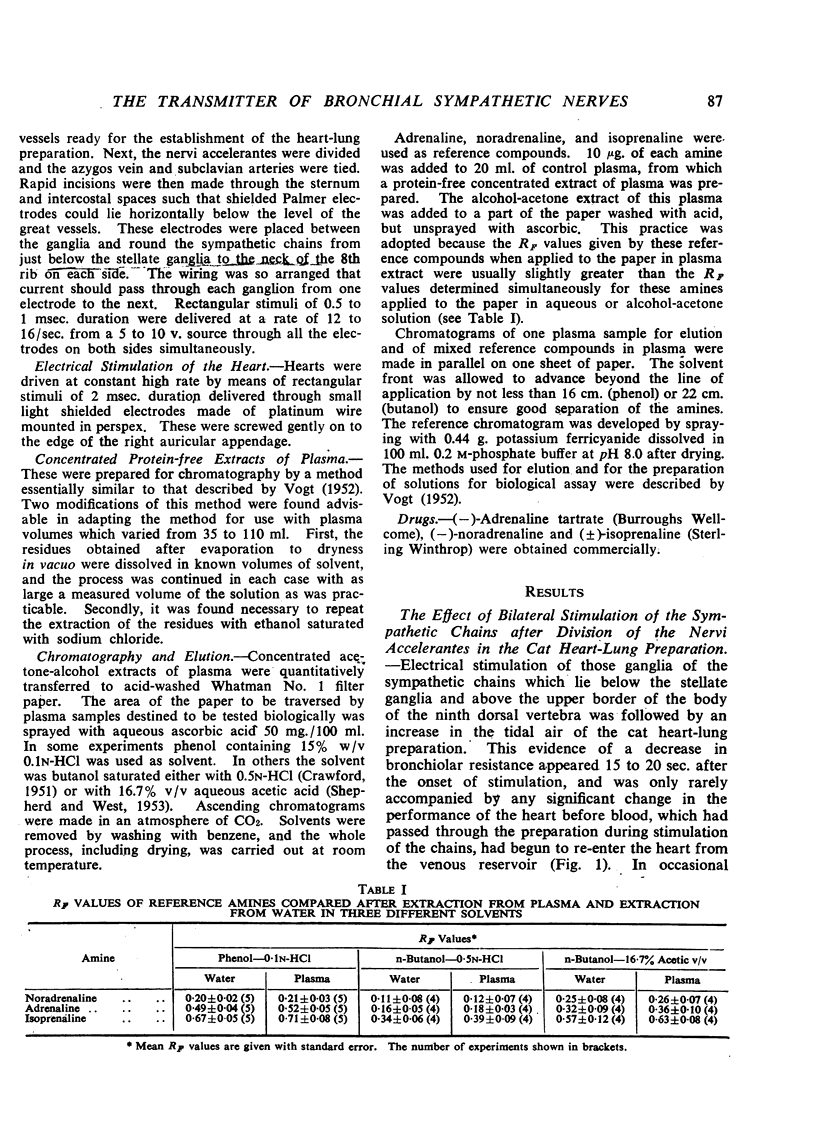
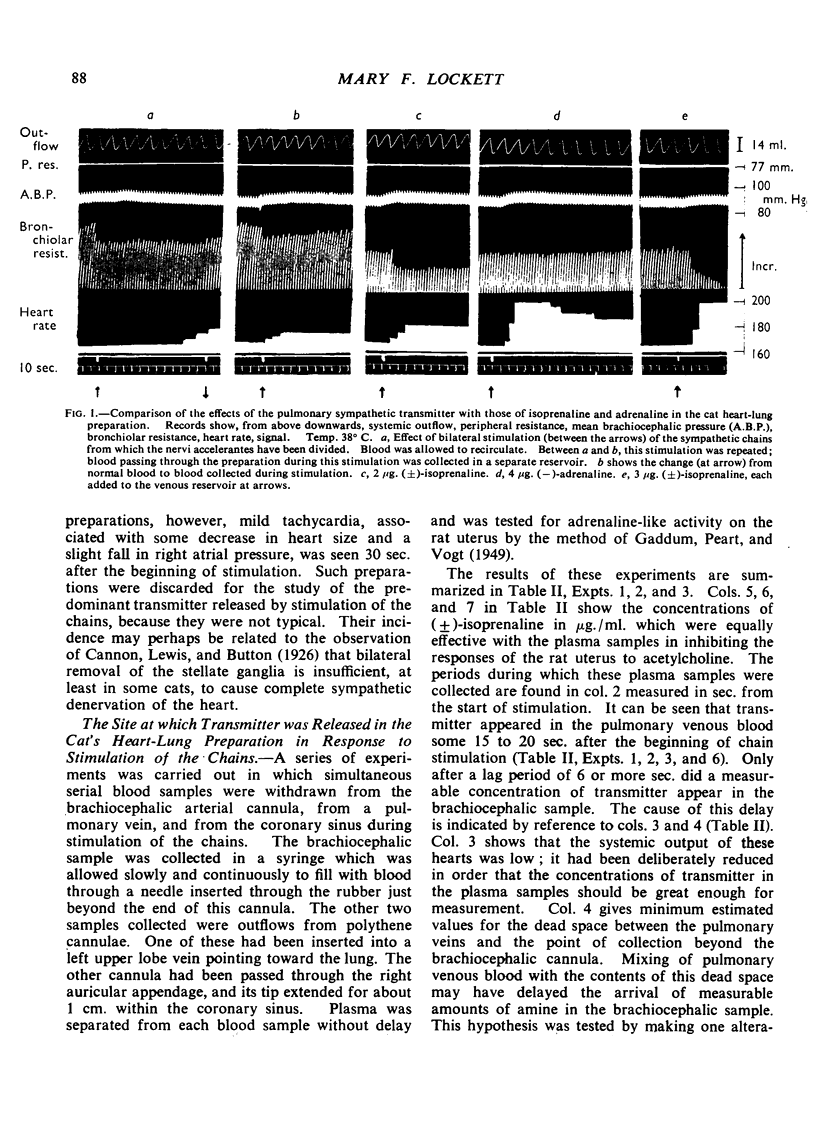
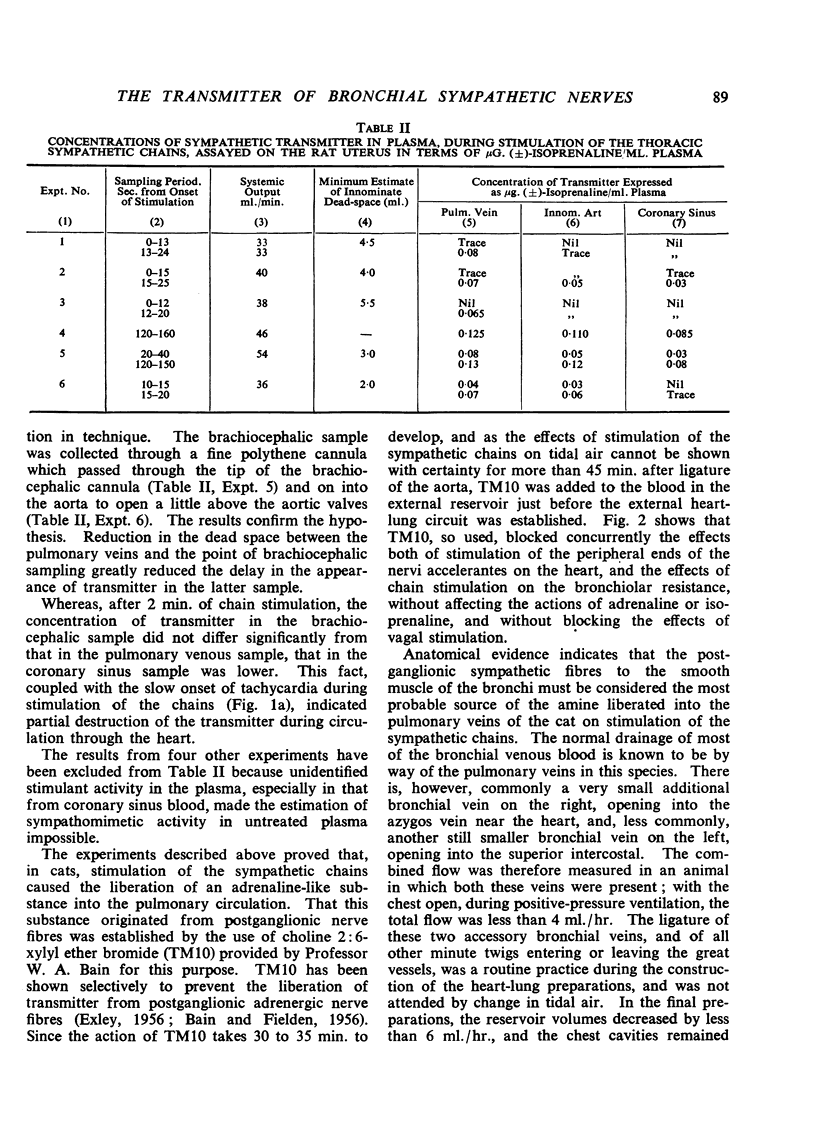


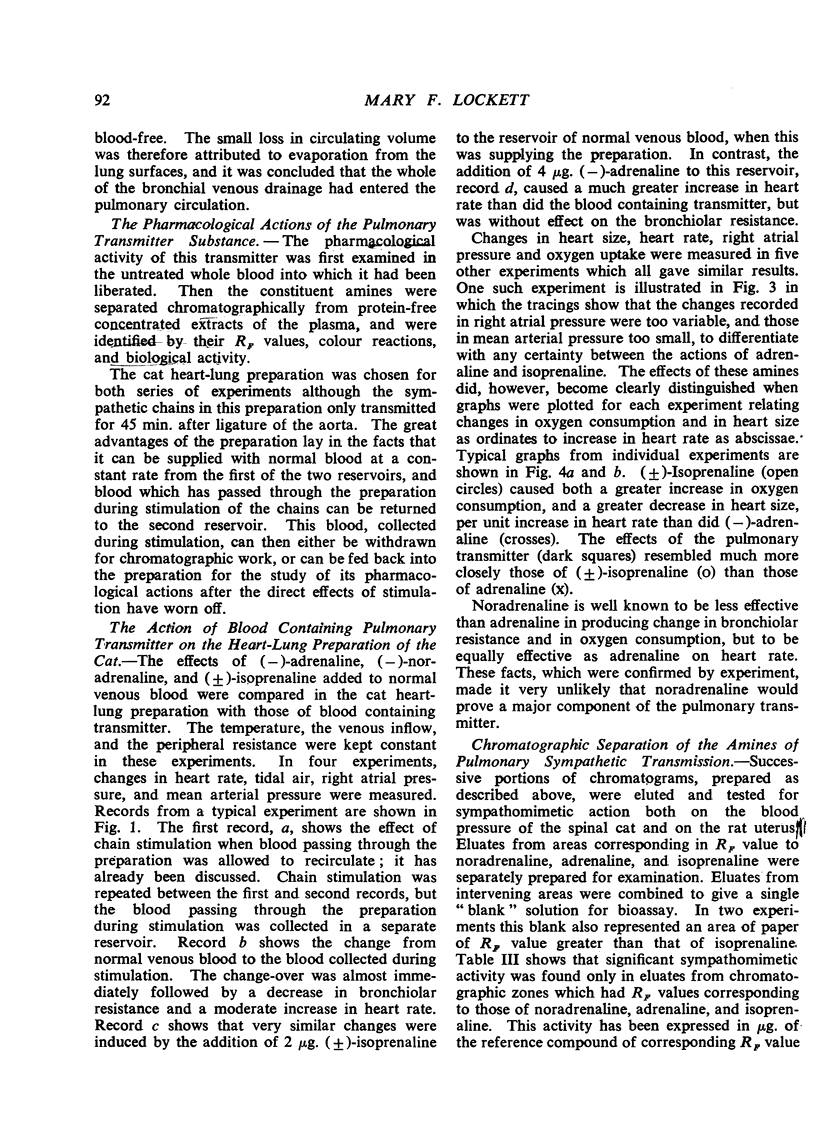
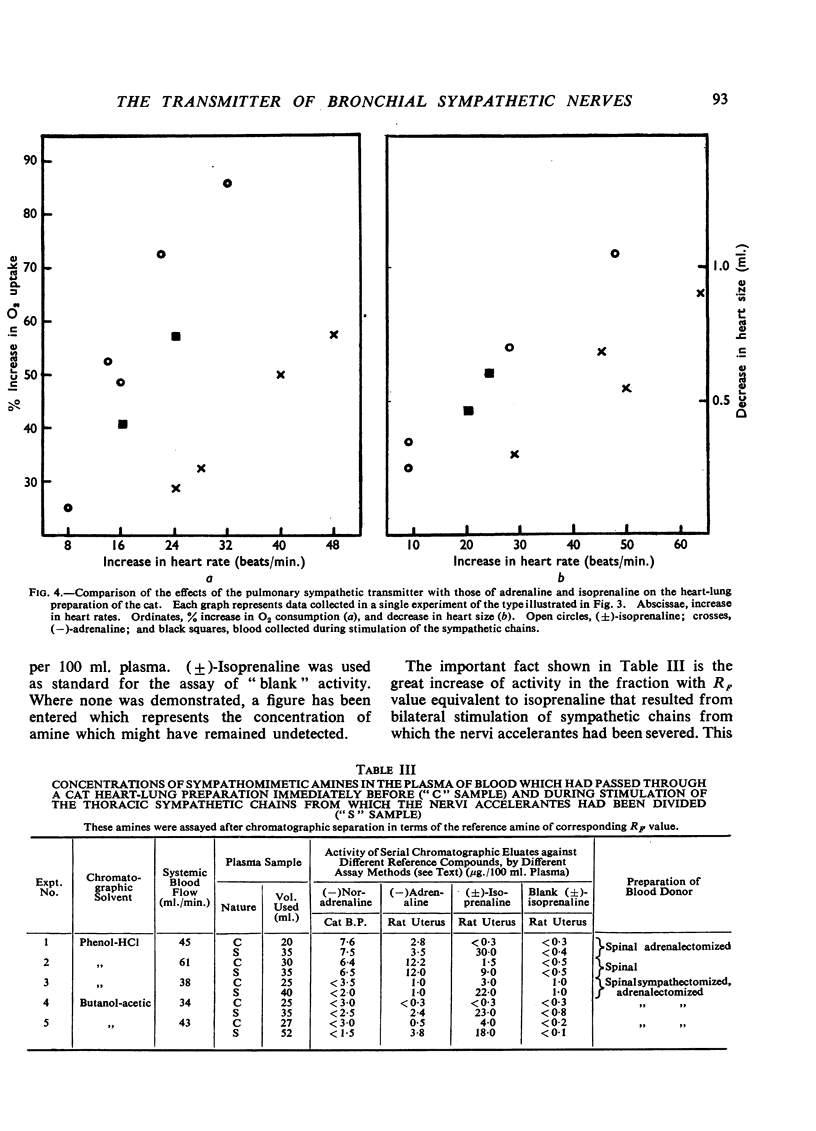



Selected References
These references are in PubMed. This may not be the complete list of references from this article.
- CRAWFORD T. B. B. Derivatives of adrenaline and noradrenaline in an extract of an adrenal medullary tumour. Biochem J. 1951 Feb;48(2):203–208. doi: 10.1042/bj0480203. [DOI] [PMC free article] [PubMed] [Google Scholar]
- Gaddum J. H., Peart W. S., Vogt M. The estimation of adrenaline and allied substances in blood. J Physiol. 1949 Jun 15;108(4):467–481. doi: 10.1113/jphysiol.1949.sp004350. [DOI] [PMC free article] [PubMed] [Google Scholar]
- Knowlton F. P., Starling E. H. The influence of variations in temperature and blood-pressure on the performance of the isolated mammalian heart. J Physiol. 1912 May 6;44(3):206–219. doi: 10.1113/jphysiol.1912.sp001511. [DOI] [PMC free article] [PubMed] [Google Scholar]
- LANDS A. M., LUDUENA F. P., TULLAR B. F. The pharmacologic activity of the optical isomers of isopropylarterenol (isuprel) compared with that of the optically inactive analog 1-(3,4-dihydroxyphenyl)-2-isoprophylaminoethane HCI. J Pharmacol Exp Ther. 1954 Aug;111(4):469–474. [PubMed] [Google Scholar]
- LOCKETT M. F. Identification of an isoprenaline-like substance in extracts of adrenal glands. Br J Pharmacol Chemother. 1954 Dec;9(4):498–505. doi: 10.1111/j.1476-5381.1954.tb00868.x. [DOI] [PMC free article] [PubMed] [Google Scholar]
- SHEPHERD D. M., WEST G. B. Hydroxytyramine and the adrenal medulla. J Physiol. 1953 Apr 28;120(1-2):15–19. doi: 10.1113/jphysiol.1953.sp004868. [DOI] [PMC free article] [PubMed] [Google Scholar]
- VOGT M. The secretion of the denervated adrenal medulla of the cat. Br J Pharmacol Chemother. 1952 Jun;7(2):325–330. doi: 10.1111/j.1476-5381.1952.tb01329.x. [DOI] [PMC free article] [PubMed] [Google Scholar]


